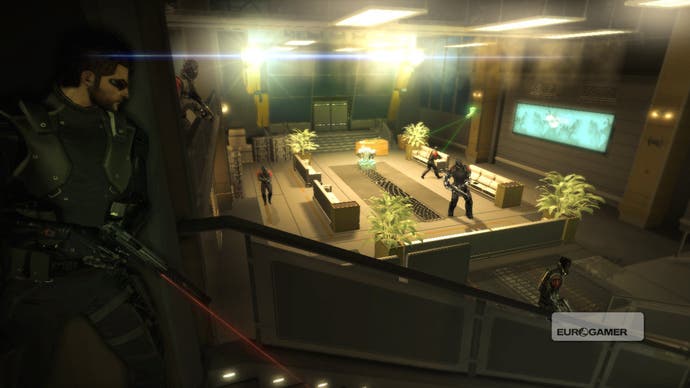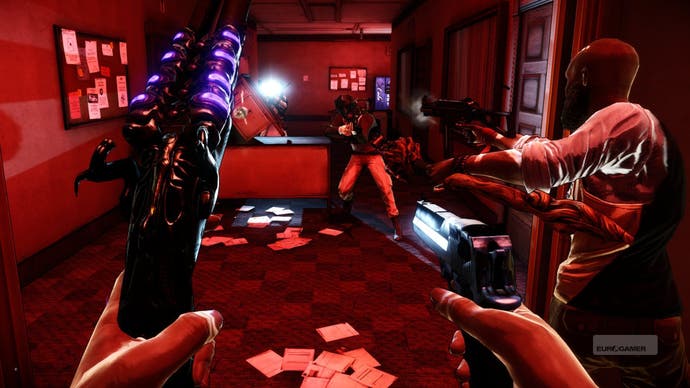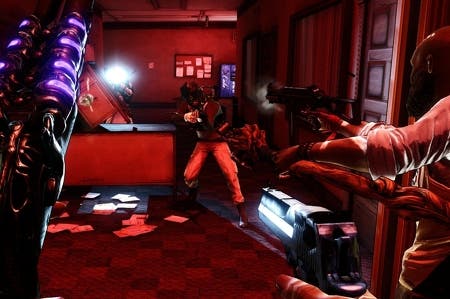Glorious Technicolor
Gaming's rediscovered the rainbow, and it's lovely.
Apologies in advance for this: as Saturday Soapboxes go, it's going to be chirpy and probably quite inane. That makes some kind of sense, at least. The conversation it was based on was chirpy and inane too. That's my bag, I guess.
A few days ago, a friend of mine challenged me to think of something genuinely positive about the current gaming scene. He'd been listing all of the woes for the last few minutes: studio closures, brain drains, cloning, delayed next-gen consoles, triple-B games vanishing, traditional handhelds in trouble...

I'm not going to pretend what I came up with can match any of that. Truth be told, there are hundreds of thousands of things I feel genuinely positive about, anyway. There's the theoretically easy route to market, the range of platforms for developers to aim for, the endless possibilities of cheap middleware and - oh yeah! - the sheer amount of good games that are coming out. Something else - something far more basic - popped into my head, though, and then it wouldn't go away. Over the last few years, games have rediscovered colour.
Okay, a caveat here: I appreciate that the much-maligned colourlessness of contemporary games has been fiercely overstated in the first place. Platformers and puzzlers, for example, never fell out of love with Richard of York, and even the blandest of military shooters will have a good chunk of the rainbow present - in the skies, in the trees, in the rich glow of your burning and irradiated comrades. Drink it in! The idea that games have become monochrome this generation holds up to no scrutiny.
What I do think is true, though, is that games often play back in the mind a little blandly now, due to their artfully limited pallets. When I think of Space Marine, in other words, I tend to remember uninterrupted passages of rusty browns, while a lot of other shooters seem to be parades of sandy beige and urban grey. When I say games have rediscovered colour, I guess I mean that more and more games are falling in love with bold, dynamic ranges of colour: they're throwing in all kinds of different shades at once, and it makes a real difference.

The time I first noticed this, I think, was with The Darkness 2. The original game was totally fine - I will follow Starbreeze into hell, if I must, and it seems, increasingly, that I'll probably have to - but it flashes past in the memory as wet blacks and whites: the soot and smudge of New York, the shadows and fog of demonic possession. The sequel doesn't really mess with the basics - it's still twisting-tentacles deployed against nasty Mafia grunts - but what happened to the surroundings? The night sky's a rich blue, interiors are deep reds and greens. Those tentacles of yours have turned purple. (Maybe see a doctor?) I didn't expect any of this in a game that's mainly concerned with pulling peoples' spines out through their mouths, but I'm happy I got it anyway.
For me, it was enough - along with the graphic novel art styling that supported it - to shift a game I wasn't particularly interested in towards the realms of things that I really wanted to play. Looking back, it was part of a wider trend.
Operation Flashpoint: Red River, for example, is the epitome of the serious military shooter, but the huge cloudscapes it flings over its Tajikistan wild-lands are crazy, expressionist sprays of tinted light, and they make the game so much more dramatic and interesting to behold. Then there's the jaunty Tricolour of Mirror's Edge and its scrubbed urban dystopia, or the toxic ambers of Deus Ex: Human Revolution, intercut with those shards of throbbing red neon. UK Resistance once campaigned for more blue skies in games. Blue skies are back. Blue skies are the least of it, actually.

Colours like this help to fix a game in your mind a little more clearly. They can also change the tone of the game itself, apparently. A while back, a Gearbox producer told me, for example, that Borderlands wasn't particularly funny before the 11th-hour art change: it was dry and blandly serious, as were the visuals. Then in came that sketchy new aesthetic style and those bright, cartoon colours, and in came the characters, the humour, and the sense of personality that ultimately wins you over. Can you imagine Borderlands without any of that? It would be nothing but guns - and not even they would really matter much anymore.
Where's this colour coming from? I suspect exposure to indie development might have something to do with it. Indie games not only have to stand out without relying on dazzling animation systems, mega-poly models and gigantic set-pieces. They have to make an impression in a short space of time: from a few screenshots on a blog to a quick YouTube video. They also come from people who want to challenge games a bit; who want to mix the urban camo with something a touch more playful. They hark back to the early days of the industry, too, when colour was pretty much all a designer had, so why not fling it around like Jackson Pollack?
It's a good trend, if you ask me, and I hope it continues. Most of my favourite games tend to be crazily colourful, anyway, from the breezy billboard riot of Jet Set Radio to the mad pastels - if that's possible - of Mario 3. I appreciate, however, that, like Absinthe, Cold Comfort Farm, and Euthymol toothpaste, this isn't for everyone. I love the luminous greens and yellows you get in Diablo 3, for example, but I can sympathise with anybody who feels their dark fantasy has been fundamentally compromised. Equally, I'm not sure even I want Battlefield 4's cast of three-star generals and hardened Tier One Operators to suddenly freak out in a moonage daydream. I don't want them riding the plastic swan down the rainbow tunnel to the Wonka factory. (Actually, that sounds rad.)
Colour's great, then, but like those new skills you got after you were bitten by that weird spider a while back, it should remind you that great power comes with great responsibility - and that's even before you get into the whole business of snubbing all those colour-blind players who are already out there being endlessly frustrated by poor button prompts and invisible signposting. As my mother used to say on the tragic childhood occasions when I'd bust out my crayons: have fun, but try and stay within the lines, eh?

